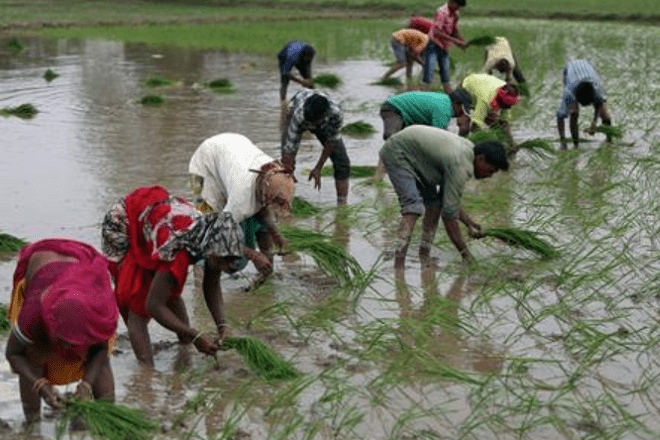While rice sowing has been a concern for several months now owing to lesser acreage this Kharif season, according to the advanced estimates of this year, the yield will be lower than last year’s actual production. Rice production in India is actually lower at 100.4 million tonnes while compared to last year’s yield of about 103 million tonnes. In fact, Further, it is not just rice yield that has taken a hit this sowing season. According to a recent Kotak Institutional Equities report, the whole kharif production of foodgrain is “likely to be 0.7% lower at 140.6 million tonnes compared to first advance estimate of FY2019.” The acreage for foodgrain has also dipped and is 0.8% lower than actual Kharif production in last fiscal.
Despite heading towards a higher sowing for some months, sugarcane and cotton production has also dwindled and is down by 1.6% and 0.7% respectively. Among other Kharif crops, pulses production has also slipped by 10.7% at 8.2 million tonnes along with coarse cereals’ production which is 3.4% lower at 32 million tonnes.
“Sowing for the Kharif season matched up to last year’s level even with a delayed start to sowing,” Kotak Institutional Equities said in a report. The government has also lowered its estimates of foodgrain production at 140.57 million tonnes as rice and pulses output falls, according to data by the Agriculture Ministry. The same stood at 141.71 million tonnes in last year’s Kharif season.
Even though the monsoon had been normal, uneven and spatial rainfall has largely contributed to the lower acreage of certain crops, a CARE Ratings report said earlier. “Kharif crops were affected in some states because of floods but it would not have much impact on the overall production,” Parshottam Rupala, Minister of State for Agriculture, said earlier, PTI reported.
According to a previous report by CRISIL Research’s Agriculture, “Indian farmers are expected to earn over 10% more in the Kharif season as the uneven rains have led to lower sowing. Lower Kharif output is expected to push up mandi prices, and boost the profitability of most crops, providing respite to farmers.”

